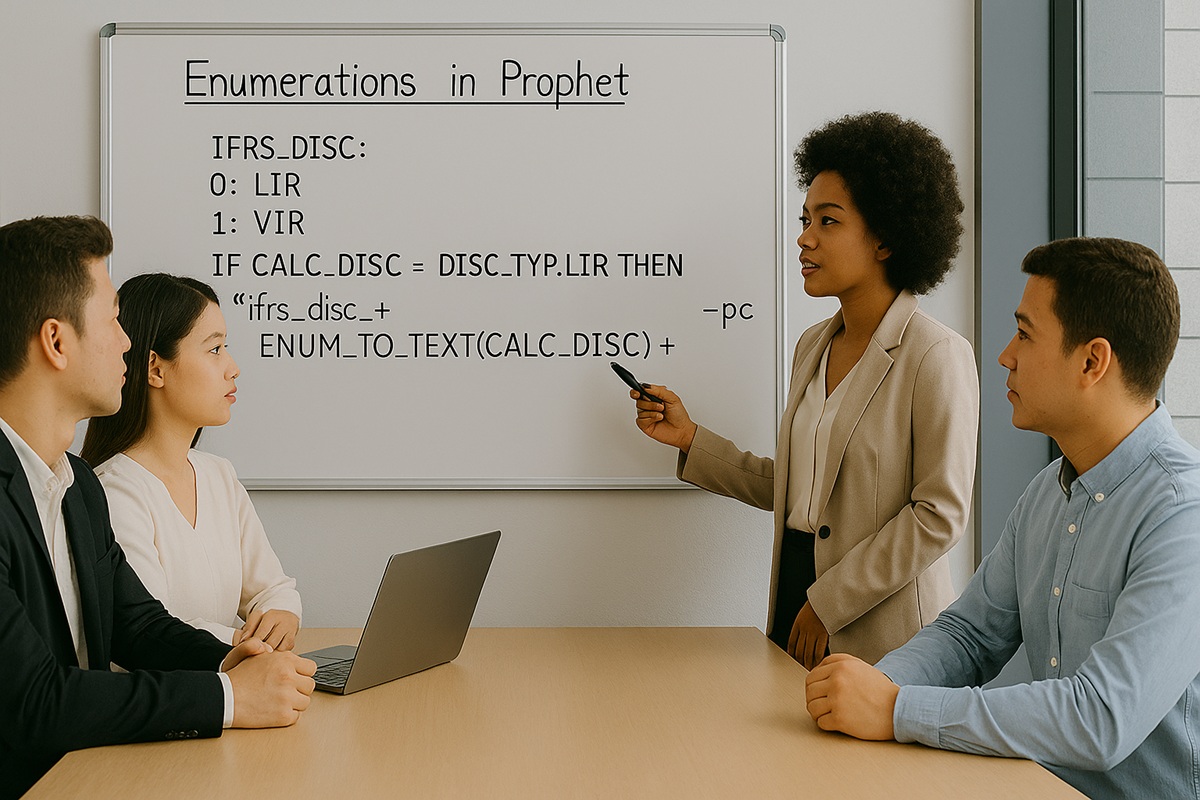Guide 3: Let Prophet Pick Up Old & New Assumptions Automatically
For many life insurance and family takaful companies, Analysis of Change (“AOC”) is one of the most resource-intensive components of IFRS 17 actuarial reporting. It requires detailed calculations to isolate the financial impact of changes in assumptions, model refinements, new business, and other drivers — often at a level of granularity requested by auditors or internal stakeholders.
A major challenge in this process lies in switching between old and new assumptions across multiple runs. Traditionally, actuaries prepare separate Prophet tables for each assumption type and each AOC component, resulting in:
- Significant manual effort to prepare, manage, and version the tables
- Increased risk of human error-
- Longer testing and validation cycles
Fortunately, with the right modeling setup, you can automate how Prophet reads assumptions — allowing you to control whether the model applies previous or current assumptions for each AOC step, without manually preparing multiple table sets.
In this post, we’ll explain how this can be achieved and why it offers a more efficient, scalable, and auditable approach to IFRS 17 AOC calculations.
The Challenge: Too Many Assumption Sets
In a typical AOC analysis, the valuation actuary or auditor may require separate attributions for different assumption changes. For example:
- Step 1: Measure the impact of mortality assumption changes
- Step 2: Then assess the impact from TPD and CI assumptions
- Step 3: Followed by lapse assumption changes
- Step 4: Then expense, claim delay, inflation, and so on
This often leads to the creation of multiple copies of Prophet tables, each representing a different combination of assumptions. Managing these tables is labour-intensive and introduces significant operational risk:
- Tables may be incorrectly updated or mapped
- Version control becomes difficult
- Additional testing is needed just to validate that the tables are properly loaded
Over time, this approach creates a heavy maintenance burden for actuarial teams — especially if the number of AOC components or reporting granularity increases.
The Solution: Let the Model Drive the Assumptions
Instead of maintaining multiple table sets externally, we recommend an approach that allows the Prophet model itself to determine which assumptions to use for each AOC step. Here’s how it works:
- Only maintain one set of up-to-date assumption tables. These contain the latest assumption values used for regular valuation.
- Within the model, use controlled logic (such as flags, variables, or calculation looping techniques) to tell Prophet when to apply current vs. previous assumptions, by assumption type.
- For each AOC step, adjust the controlling logic to switch the assumption source dynamically — without touching the tables themselves.
For example:
- In AOC Step 1, the model uses “previous” mortality assumptions and “current” everything else
- In AOC Step 2, it switches to “current” mortality assumptions while keeping the rest unchanged
- And so on…
For each AOC step (by calculation looping), Prophet stores required results in designated result storing variables, which we can include NO_CALC function to prevent these results from being overwritten by the subsequent looping.
By adopting this automated approach to assumption management, teams can significantly cut down on manual effort. There’s no longer a need to prepare and maintain multiple sets of assumption tables for each step in the AOC process. This reduces the time spent editing, mapping, and updating tables—freeing up valuable actuarial resources for more analytical tasks.
At the same time, this method helps minimize the risk of human error. When actuaries no longer have to manually select or replace assumption tables for each scenario, the chances of picking the wrong table or missing a required update are greatly reduced. This not only improves the accuracy of your IFRS17 reporting but also enhances the overall reliability and consistency of your Prophet model.
Conclusion
This setup may require some upfront development to structure the logic and assumption flags correctly within your Prophet model. But once implemented, it can significantly reduce ongoing workload — especially in monthly or quarterly IFRS 17 reporting cycles where assumption changes need to be isolated frequently.
In our experience, companies that adopt this technique not only save time but also gain greater confidence in the integrity and efficiency of their actuarial models.
If you’re exploring ways to make your Prophet model more agile and auditor-friendly under IFRS 17, this is one improvement worth prioritizing.



Pingback: Practical Guidance: Streamlining Prophet Models for IFRS 17 Reporting (4) - ACTBuilder